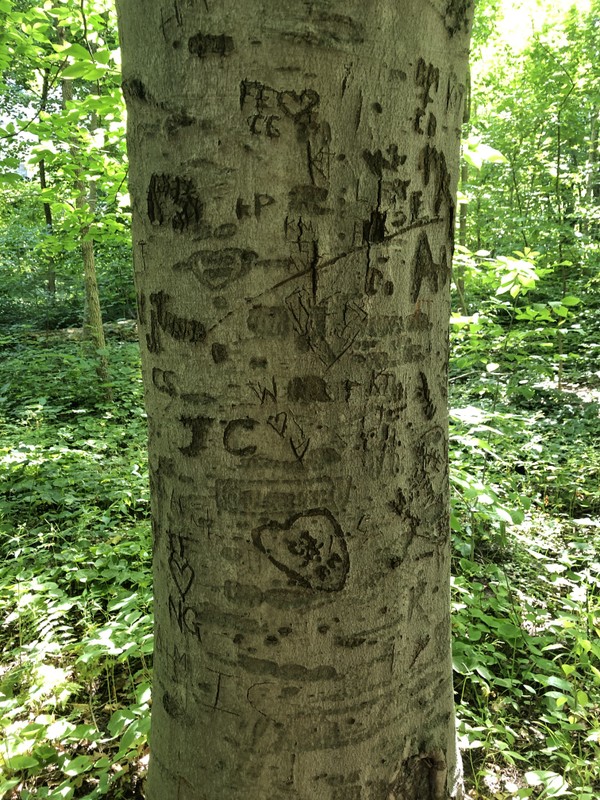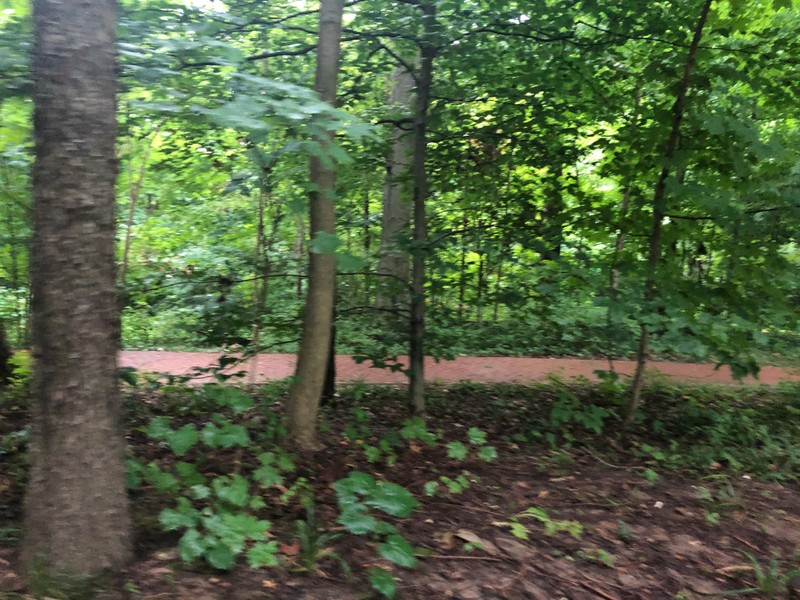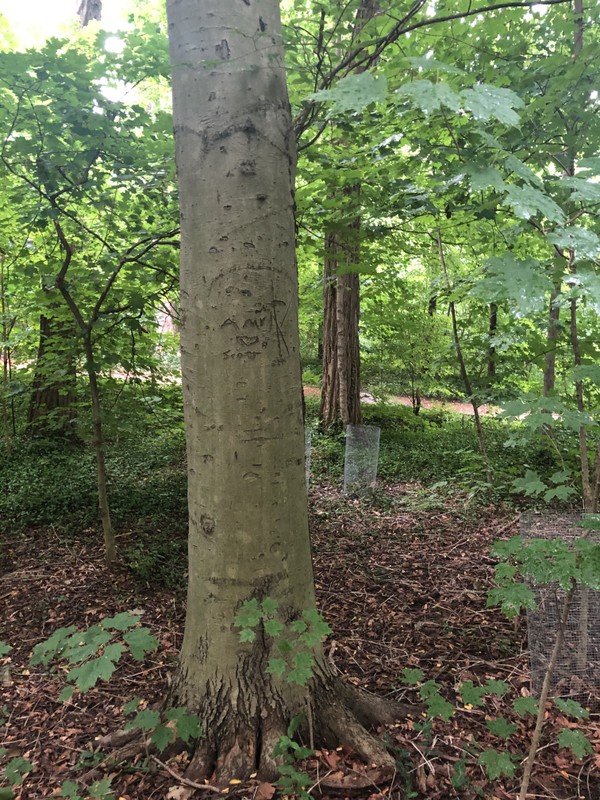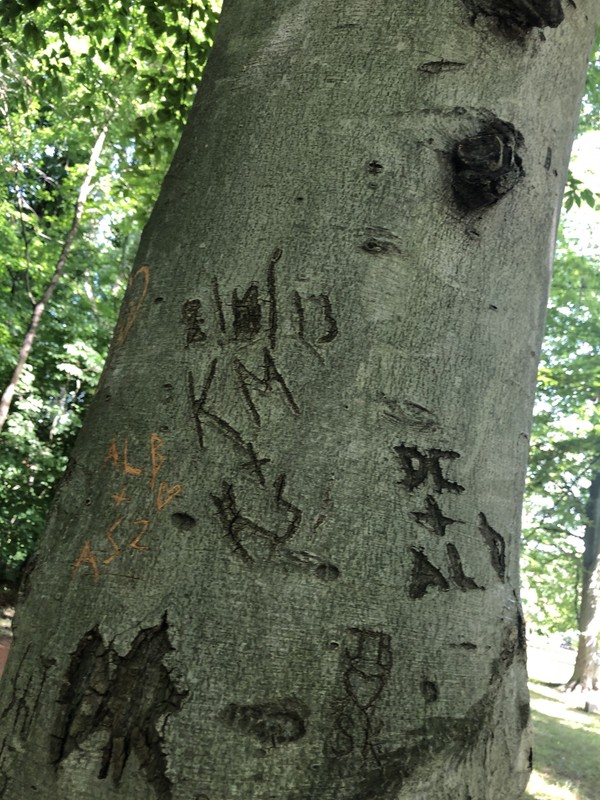Tree Carvings in Dunn's Woods at Indiana University
Introduction
Text-to-speech Audio
Images
A tree found in Dunn's Woods

Dunn's Woods

A tree found in Dunn's Woods

A tree found in Dunn's Woods

Backstory and Context
Text-to-speech Audio
Since the beginning of mankind, humans have felt the need to leave an everlasting mark, whether it be painting on a cave wall, or carving initials on a tree. The use of carving on trees is actually a very important tool for historians in looking into the past. As Andersson (2005) states, "Culturally modified trees (CMTs) provide unique insights into traditional knowledge and uses of the forest ecosystems." Looking into the trees for history seems unlikely but it is so important. Although the carving in the trees in Dunn's Woods are not exactly ancient they still provide a look into what campus life was like at the time that the carvings were made. Andersson also states, "(CMTs) are important artifacts, providing unique insights into traditional knowledge, perceptions and uses of the forest ecosystems." Looking into the past use of trees could very well help historians see what they need to make the most accurate theory that they could possibly make. Carvings in the trees help us now, but they also have the potential to allow future students to see what exactly what campus life is like today.
Dunn's Woods not only holds historical importance but also physical importance. White (2013) states, "Exposure to natural environments can help restore depleted emotional and cognitive resources." Allowing students the opportunity to have access to nature is an extremely important aspect of Dunn's Woods. Students are constantly facing issues to their emotional health and having a way to restore it can make all the difference in the world. White also states, "natural environments among large samples is limited." The fact that natural settings are becoming even more rare by the second shows that Dunn's Woods is becoming more of an important place, including the tree carvings that provide some insight as to what life was like in the past. Whether or not Mosses Fell Dunn knew that the land he would sell to Indiana University would become such an important historical and natural land mark does not matter, because nothing can change the importance that these woods hold.
Sources
Andersson, R., Östlund, L., & Lundqvist, R. (2005). Carved trees in grazed forests in boreal Sweden—analysis of remaining trees, interpretation of past land-use and implications for conservation. Vegetation History and Archaeobotany, 14(2), 149-158.
Mincey, S and B Fischer. "The woodland campus: Indiana University-Bloomington historic walking tour." In. Bloomington, 2, .
White, Mathew P., Sabine Pahl, Katherine Ashbullby, Stephen Herbert, and Michael H. Depledge. "Feelings of restoration from recent nature visits." Journal of Environmental Psychology 35 (2013): 40-51.
Photo by Haley Merida
Photo by Haley Merida
Photo by Haley Merida
Photo by Haley Merida
